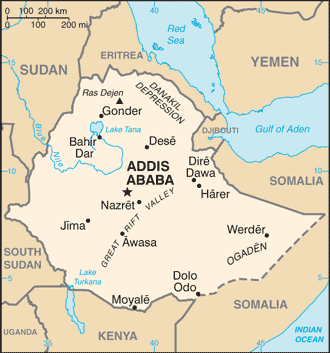Power in Knowledge
Girls face barriers to education that boys simply do not!
In 2009, only 41% of girls passed primary education and there were only 30% enrolled in secondary education.
20% of Ethiopian girls complete high school and their has been no improvement until now.
Ethiopia has one of the highest rates of child marriage in the world. Child marriage remains a deeply rooted tradition in Ethiopian communities. Customs such as marriage by abduction and forced unions between cousins perpetuate the practice.
In Ethiopia, girls who are married before the age of 15 are more likely to be illiterate and less likely to be enrolled in school. Only 12% of married girls aged 15-19 are enrolled in school.
Girls between the ages of 15 and 19 years are seven times more likely to be HIV positive than boys in the same age range.
In addition, 80% of Ethiopian women have experienced female genital mutilation/cutting, and more than half of these circumcisions occur before a girl’s first birthday.

Educational Challenges and Issues.
•Statistics from 2009 indicate that 82% of Ethiopian women aged 15 and over are illiterate, compared to 58% of men.
•School-related factors affect educational opportunities for girls. For example, large class sizes of boys and girls (60-80 students), ½ days of school, lack of motivated and gender-sensitive teachers, predator teachers, language barriers in upper grades, the absence of targeted interventions to support girls and quality education, all negatively impact the girls’ chances of success.
•Both primary and secondary schools may lack a water supply and separate toilets for girls and boys. This is one reason for girls leaving secondary school or missing classes preferring to stay at home during menstruation. Girls may lack knowledge of menstrual hygiene since the subject is taboo.
•Rudimentary English is taught prior to 7th grade. In the upper grades 7th – 12th, English is used for all quizzes and tests, leaving many girls to fail.
Educate a Girl * Deter Child Marriage * Break the Cycle of Poverty * Change a Generation

The Social and Economic benefits of girls education!
Despite progress, Ethiopia’s education indicators are still poor and below Sub-Saharan averages .
Ethiopia is ranked 134th out of 149 countries in the Education for All (EFA)
UNESCO Global Partnership for Girls’ and Women’s Education, prosperity.com/globe/ethiopia
All girls have the right to education. Education fosters dignity and a sense of self-worth. It offers opportunities to acquire knowledge and skills and enhances life prospects. Along with nutrition, health and skills, education is a pillar of human capital: These essential elements together enable people to lead productive lives and to contribute to their countries’ economic growth and development.
Secondary, or higher, education for women is particularly strategic. According to the UN Millennium Project, it provides the “greatest payoffs for women’s empowerment”. Secondary education yields higher returns for women than for men, including increased use of maternal health and family planning, allowing women to space the births of their children and to determine how many children they want to have, and altering attitudes towards harmful practices. Women with secondary education are also more likely than illiterate women to understand the dangers posed by HIV and how to prevent its spread. In Egypt, women with secondary education were four times more likely to oppose the genital mutilation/cutting of their daughters than women who had never completed primary school. Secondary education also plays a more significant role than primary education in reducing violence against women, for example, by empowering women to leave abusive relationships.
The social and economic benefits of girls’ education are summarized below:
•Girls’ education contributes to economic growth. Investing in the education of girls is one of the most effective ways to reduce poverty.
•Educated mothers increase human capital through their influence on the health, education and nutrition of their children.
•Daughters of educated mothers are more likely to attend school.
•A mother’s education also translates into higher immunization rates and better nutrition for her children, both of which increase enrollment and improve school performance.
•Every year of mothers’ education corresponds to 5 to 10 per cent lower mortality rates in children under the age of five.
•Education improves a family’s economic prospects by improving women’s qualifications and skills.
•Better-educated women participate in paid employment, families can enjoy higher income.
•Educated women are more likely to seek adequate prenatal care, skilled attendance during childbirth and to use contraception.
•They tend to marry and begin childbearing later than uneducated women.
•They also have fewer children: Every three years of additional education correlates with up to one child fewer per woman.
•When women have fewer children, the well-being and development prospects of each child are generally enhanced.
The power of girls’ education for poverty reduction, gender equality and development is unquestionable. But education alone is insufficient in the absence of supportive social institutions and systems that expand women’s opportunities and freedoms, access to resources and control of decisions affecting their lives. Simultaneous efforts to improve women’s reproductive health and economic opportunities can maximize the social and economic dividends of girls’ education.
© 2019 by PinKGirl. Proudly created with Wix.com | Terms of Use | Privacy Policy